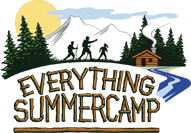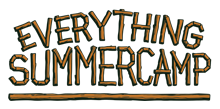Hey, Camp Fans!
Last month we asked for people to share their collections with us whatever they may be. And today, I'm thrilled to feature our first collector, Travis T.! Travis attends Camp Longhorn and he collects Baseball cards.

With over 5,000 cards to his collection, he keeps them well-organized in boxes and binders. He started collecting three years ago when he was nine years old. With a collection that is ever-growing, it’s a constant learning experience for Travis. Not to mention, it’s provided a great way to interact with people from all  over the world.
over the world.
Born a baseball fan, Travis was inspired to start his card collection when it dawned on him that every player had a card. It’s a challenge with no end in that regard. “You can’t collect them all,” Travis tells us. “So it is always a challenge looking for the next best deal.” But collecting in itself has furthered Travis’ understanding of the stats and teams of lots and lots of players.
“From there I started understanding their value and shopping eBay and looking for deals,” says Travis. “I am most proud of my graded cards,” he says. When cards are ‘graded’, they’re given a number in value based on the condition of the card and the quality of the print. “Once they are graded they go up in value, come in a case, and are a lot safer,” Travis added. 
“I have so many valuable cards that I have worked hard to accumulate,” he says. “I have also spent a lot of time organizing them by team, year, and brand. This has been a HUGE project for me that I have accomplished over many hours. I am also sending players cards for autographs and getting some back in the mail now which has been really exciting!”
Sending cards out to players is a great idea. I’m sure an autograph increases a card’s value as well! While his favorite team is the Houston Astros, neither of his top two favorite players have ever played for the Astros. A mutual favorite for Travis and his dad is Charlie Hough—professional player for 25 years! And then there’s Mike Birkbeck.
 With just one-year contracts for each team he played for, Mike really had to earn his keep! But Travis did such a good job in his explanation of why he likes Mike Birkbeck so much, I’ll let him tell the story: “One year he signed for the Indians. His teammates ask him to go on a cookout on a boat. He opted to go with his one year-old son to Disneyland instead. That boat crashed and killed several people on it. He put his family first…”
With just one-year contracts for each team he played for, Mike really had to earn his keep! But Travis did such a good job in his explanation of why he likes Mike Birkbeck so much, I’ll let him tell the story: “One year he signed for the Indians. His teammates ask him to go on a cookout on a boat. He opted to go with his one year-old son to Disneyland instead. That boat crashed and killed several people on it. He put his family first…”
Such a sad story, but a blessing for Birkbeck! “These are just some of my favorite players and I have cards for each with some autographs seen in the picture below,” says Travis. Another hero of Travis’ would be Mr. Pat Neschek. “Pat is one of the greatest card collectors of all time,” Travis explains. “I would love to hang out with him and see his cards!!!”
That would be such a cool experience, Travis! What a great collection you have. Thank you very much for sharing all these great pictures and with us and wonderful insight into what you collect and what it means to you! Till next time, Readers. And, as always, thanks for reading!
- John



 You can imagine that this time of year in the dead of winter, sources for food get harder and harder to come by for all the wild birds that have stayed for the season. Any food that is available can get buried deep under the snow. Squirrels and rabbits can dig through the snow, but birds aren’t quite so well-equipped for digging.
You can imagine that this time of year in the dead of winter, sources for food get harder and harder to come by for all the wild birds that have stayed for the season. Any food that is available can get buried deep under the snow. Squirrels and rabbits can dig through the snow, but birds aren’t quite so well-equipped for digging.


 Typically made of plastic, kazoos can be fashioned from metal as well. These instruments are small tubes, open on both ends (one end flatter and smaller than the other). Not quite halfway down the body of a kazoo, there is yet another hole which creates a small chamber where a waxy film is kept in place, but with enough free space to vibrate and shake when a kazoo player produces an air current.
Typically made of plastic, kazoos can be fashioned from metal as well. These instruments are small tubes, open on both ends (one end flatter and smaller than the other). Not quite halfway down the body of a kazoo, there is yet another hole which creates a small chamber where a waxy film is kept in place, but with enough free space to vibrate and shake when a kazoo player produces an air current.

